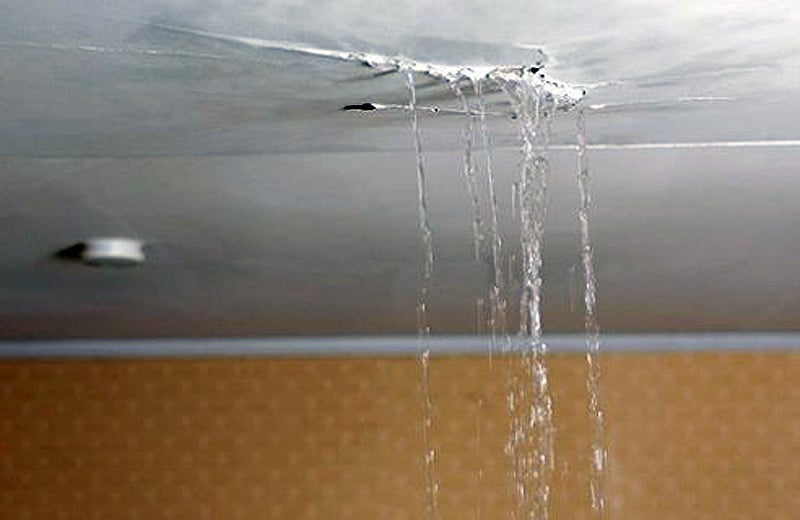The Six Most Common Sources of Water Leaks in Your Home: How to Identify and Address Them
The Six Most Common Sources of Water Leaks in Your Home: How to Identify and Address Them
Blog Article
What're your opinions with regards to Top Causes of Home Water Leaks?

Leakages not just cause waste of water yet can likewise cause unneeded damage to your residence as well as promote undesirable organic development. By looking and recognizing for daily situations that create leaks, you can safeguard your residence from future leaks and also unnecessary damages.
Elbowing in roots
A lot of water leaks start outside the residence rather than inside it. You might see wet spots or sinkholes in your yard, as well as that could imply that tree origins are attacking water lines causing water to leak out.
Corroded water systems
As time passes by, your plumbing system ages and deterioration such as corrosion may begin eating away the pipes. This might be the cause of discoloration or bending on your water pipes. This requires an inspection with your plumber right away. Take into consideration changing the pipelines because they are at a greater danger of deterioration than the more recent models if our plumbing system is old.
Faulty Pipe Joints
The factor at which your pipelines link is often the weakest link in the waterline. Pipe joints can degrade gradually, causing water leakages. The majority of pipeline joints are not conveniently noticeable. If you have noisy pipes that make ticking or banging noises, especially when the hot water is activated, your pipeline joints are possibly under a great deal of pressure. It is advisable to have your plumber inspect your system annually.
Immediate temperature adjustments.
Extreme temperature changes in our pipelines can trigger them to broaden as well as contract unexpectedly. This development and also contraction may create fractures in the pipes, especially if the temperature level are below freezing. If you kept an eye on how your plumbing functions, it would certainly be best. The existence of the previously stated scenarios often indicates a high risk.
Poor Water Connectors
At times, a leakage can be caused by loosened hose pipes and pipelines that supply your devices. Typically, shifting is what creates the loose water Links. You might locate in the case of a cleaning device, a tube may spring a leakage due to drinking during the spin cycle. In case of a water links leak, you might notice water running straight from the supply line or pools around your home appliances.
Obstructed Drains
Blocked drains pipes might be frustrating and inconveniencing, however they can occasionally end up triggering an overflow bring about burst pipelines. Maintain removing any type of products that may decrease your drains pipes that can clog them to prevent such aggravations.
All the above are reasons for leaks yet not all water leaks result from plumbing leakages; some leaks might originate from roof leaks. All leakages need to be repaired right away to stay clear of water damages.
Leaks not only trigger waste of water however can additionally create unneeded damage to your home as well as advertise undesirable natural development. By recognizing and looking for daily circumstances that create leakages, you can shield your residence from future leakages and also unneeded damages. Today, we will certainly look at 6 leakage creates that might be creating your pipelines to trickle.
At times, a leakage can be created by loosened hoses and also pipelines that provide your devices. In instance of a water links leakage, you may observe water running straight from the supply line or pools around your home appliances.
How To Check For Water Leak In Your Home
How To Check for Leaks
The average household's leaks can account for nearly 10,000 gallons of water wasted every year and ten percent of homes have leaks that waste 90 gallons or more per day. Common types of leaks found in the home are worn toilet flappers, dripping faucets, and other leaking valves. These types of leaks are often easy to fix, requiring only a few tools and hardware that can pay for themselves in water savings. Fixing easily corrected household water leaks can save homeowners about 10 percent on their water bills.
To check for leaks in your home, you first need to determine whether you're wasting water and then identify the source of the leak. Here are some tips for finding leaks:
Take a look at your water usage during a colder month, such as January or February. If a family of four exceeds 12,000 gallons per month, there are serious leaks.
Check your water meter before and after a two-hour period when no water is being used. If the meter changes at all, you probably have a leak.
Identify toilet leaks by placing a drop of food coloring in the toilet tank. If any color shows up in the bowl after 10 minutes, you have a leak. (Be sure to flush immediately after the experiment to avoid staining the tank.)
Examine faucet gaskets and pipe fittings for any water on the outside of the pipe to check for surface leaks.
Undetected water leaks can happen without the home or business owner even realizing. If you suspect a water leak, but not able to find the source. It is time to contact a professional water leak detection service, The Leak Doctor.
How To Find a Water Leak In Your Home
https://www.leakdoctor.com/blog/How-To-Check-For-Water-Leak-In-Your-Home_AE197.html

Hopefully you liked our post about How Fast Water Damage Can Ruin Your Home. Thank you for finding the time to read through our short article. Liked our blog posting? Please share it. Help other people locate it. Thank you for your time. Please visit our blog back soon.
Click Here Report this page